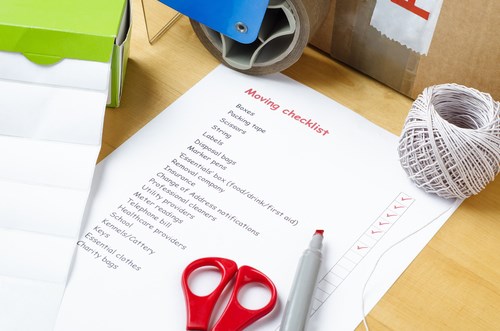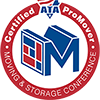
Moving is an exciting time no matter what the reason is. After all, a new relocation represents change, a new address, and a new community if you’re moving far away. It can also mean the opportunity to improve your life in many ways, from your career to your social life, and more.
With all of the excitement that relocation brings, it’s understandable that the logistics of the moving experience might be far from your train of thought. Even so, it’s important to get organized early using the best resources you can find in order to enjoy a smoother, more relaxing transition into your new lifestyle.
Accomplishing a perfectly organized move requires understanding of the moving process from beginning to end. At SeaCure Moving, Inc., we’re here to help you with everything you need to get started with your relocation. Our mission is to help our community experience the joy of a better move—which is why we’ve provided this breakdown of the most important parts of the moving process to help you experience an easier, more enjoyable relocation.
Stage One: Planning
Planning your move is the most important step of the moving process—and is also the first thing you should do once you find out you’re moving. Create a detailed moving calendar, and fill it with the most important information you need to know regarding your move. If you’re lost on how to break down the moving process into tasks to put on the calendar, a moving coordinator from a reputable moving company can help you to get organized.
Once you’ve planned your move down to moving day, it’s time to start packing. Here’s a list of important things you’ll need to do to facilitate an easy packing process:
- Get Rid of What You Don’t Need: The longer you’ve lived in your old home, the more stuff you will accumulate. It’s a simple fact that can play havoc on your ability to have an easy move. That’s why the first thing you should do is take stock of everything you own and get rid of what’s not going with you. You can sell, donate, or throw these items away. When you’re done, you should have a reduced amount of items to pack and less work ahead of you.
- Create an Inventory of What’s Left: Once you’ve whittled down your belongings to the bare essentials, it’s time to take inventory of what’s left. This master inventory list will help you keep track of everything you have, and can make the insurance process much easier.
- Insure Your Belongings: When moving long-distance, make sure to get moving insurance. More often than not, something will fall over, rip, tear, or break during the move. Insurance allows you to get reimbursed so you can replace what you lost. Having a master inventory list will make the claims process easy since everything will already be recorded and accounted for. Make sure to shop around to compare insurance options, as coverage will vary between long-distance moving companies, NJ.
Stage Two: Packing
- Organize Your Belongings: Sure packing can be a simple process that involves throwing everything into the first box you can find. However, you run a high risk of something breaking or being misplaced since there is no organization to your packing. Pack each box according its designated room i.e. kitchen stuff with the kitchen box. In addition, mark special items like your grandma’s china in a specialty fragile box to ensure as much protection as possible.
- Label Your Items: Labeling the boxes makes moving so much easier on everyone involved. Knowing what’s inside each box without having to open it means a smoother and less chaotic unpacking process.
- Learn to Pack Professionally: Professionally packed boxes make the entire moving process a breeze. This means extra padding, more tape, higher quality boxes, and anything else that means your belongings are protected when it’s moving day. For assistance with packing, contact a professional moving company and ask for full-service packing and unpacking options.
Stage Three: Moving
- Kid and Pet Care: Moving can be tough on small children and pets. Prepare to leave the kids and pets with trusted friends or family members, or hire a sitter to help you keep them safe and happy on moving day.
- Get Move-In Ready: If you’re moving into an apartment complex, the chances are high that a tractor-trailer won’t fit. For a residential area, check parking regulations and requirements. If you’re unprepared on what to expect when you arrive at your new home, the movers may have to improvise solutions for you which could add additional fees if not covered in your agreement.
- Understand Move-In Requirements: Make sure the house is move-in ready by moving day. If you’re moving into a rental, the landlord or other responsible party may have requirements before letting movers in. Don’t let time go to waste trying to get clearance for the movers to bring everything in. Get everything squared away ahead of time to keep the headaches away.
Moving with SeaCure Moving, Inc.
At SeaCure Moving, Inc., we understand that moving across state lines can be challenging and stressful. That’s what makes us your long distance moving company in NJ. We strive to keep your move as easy and stress-free as possible. We have been providing the best moving solutions for our customers since 1981 thanks to our customer-first approach. We combine our customer service with our partnerships to deliver unmatched services that include our ProMover status and our partnership with Bekins.
Regardless of where you’re moving we provide custom crating and shipping solutions so that every aspect of your move is covered when you work with our team. If you’re ready to get started planning your move with SeaCure Moving, Inc., give us a call to speak with one of our agents about our professional moving services or fill out our online form to schedule your free, in-home moving quote.
Tags
Subscribe to SeaCure Moving's Blog




Comments